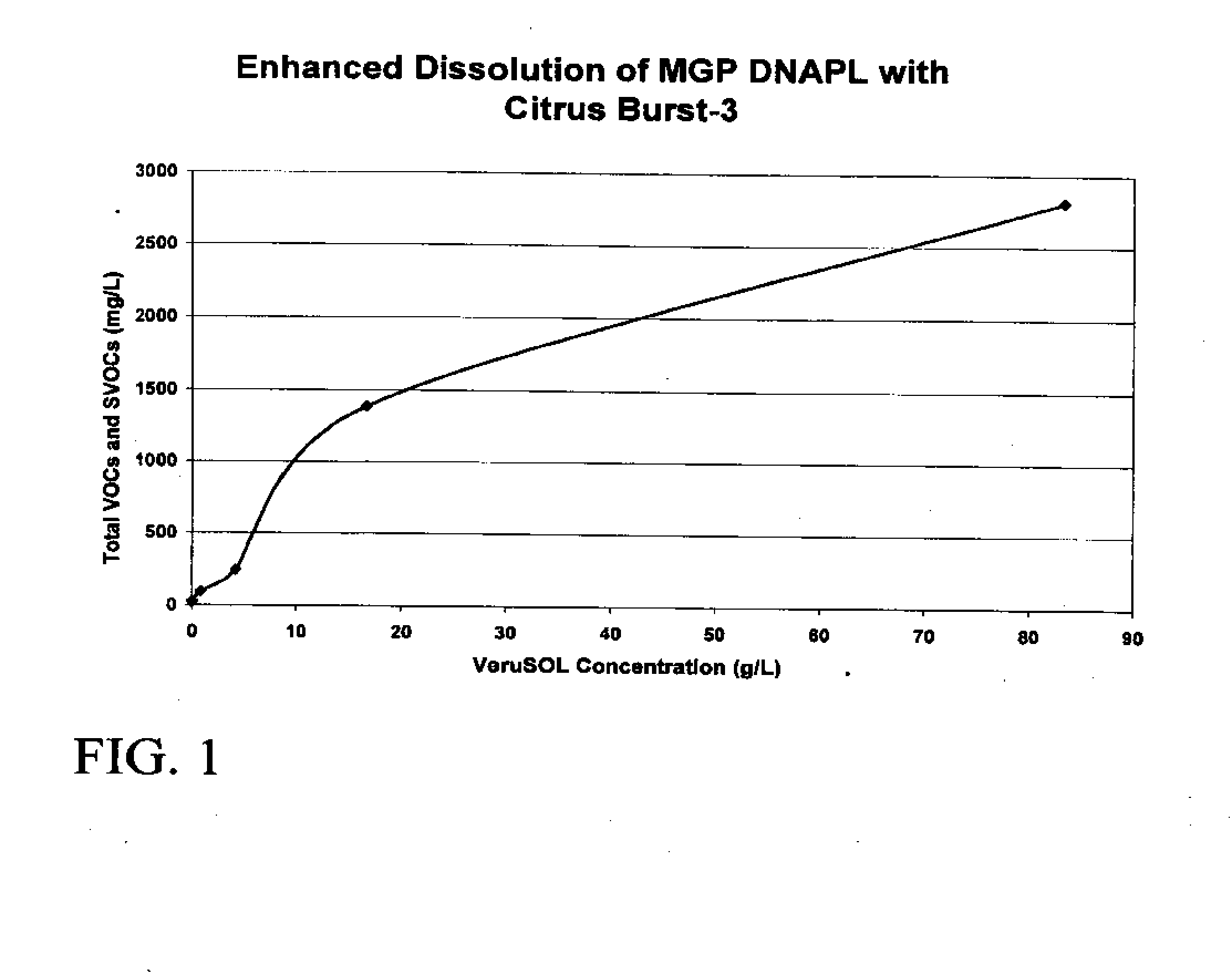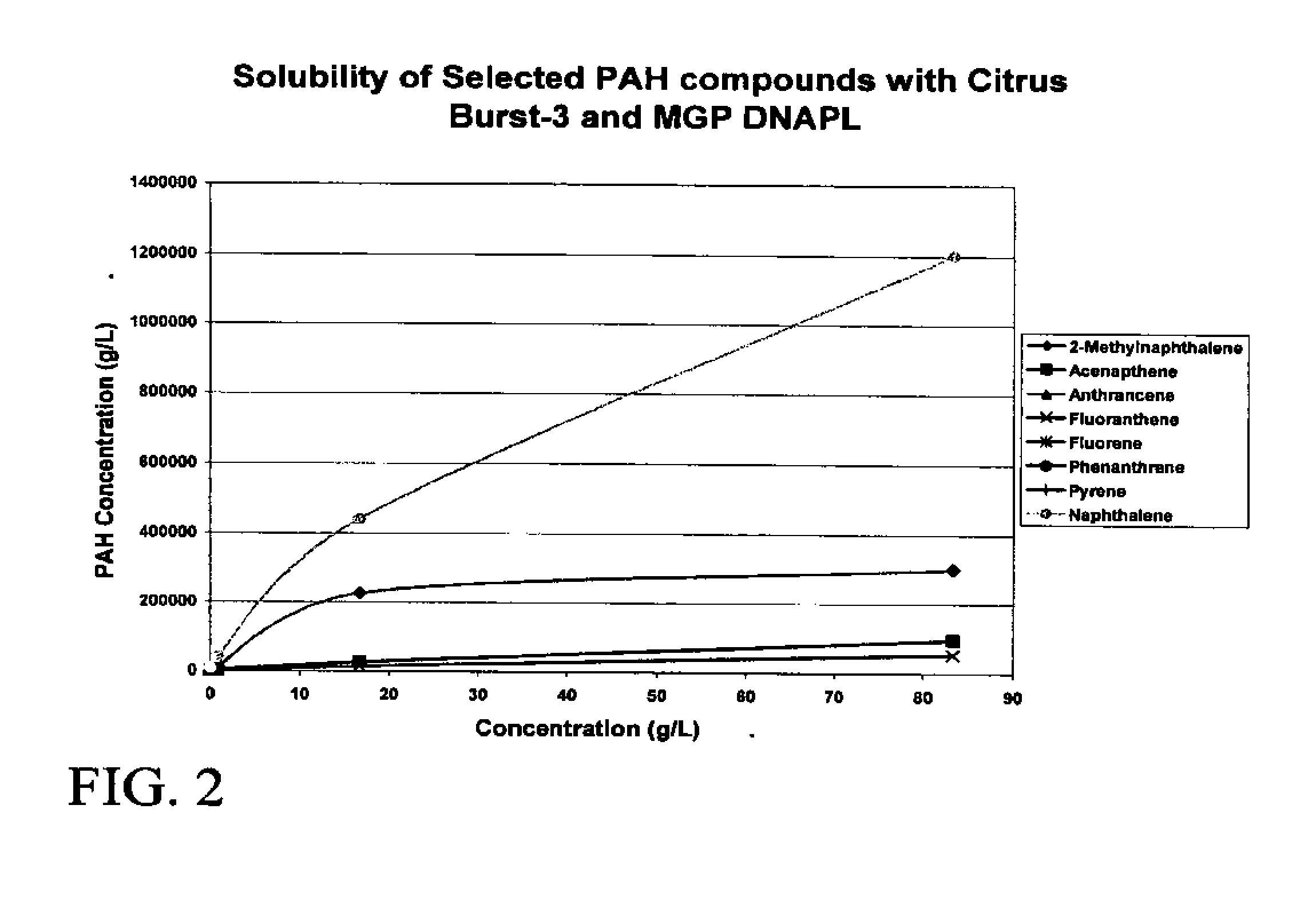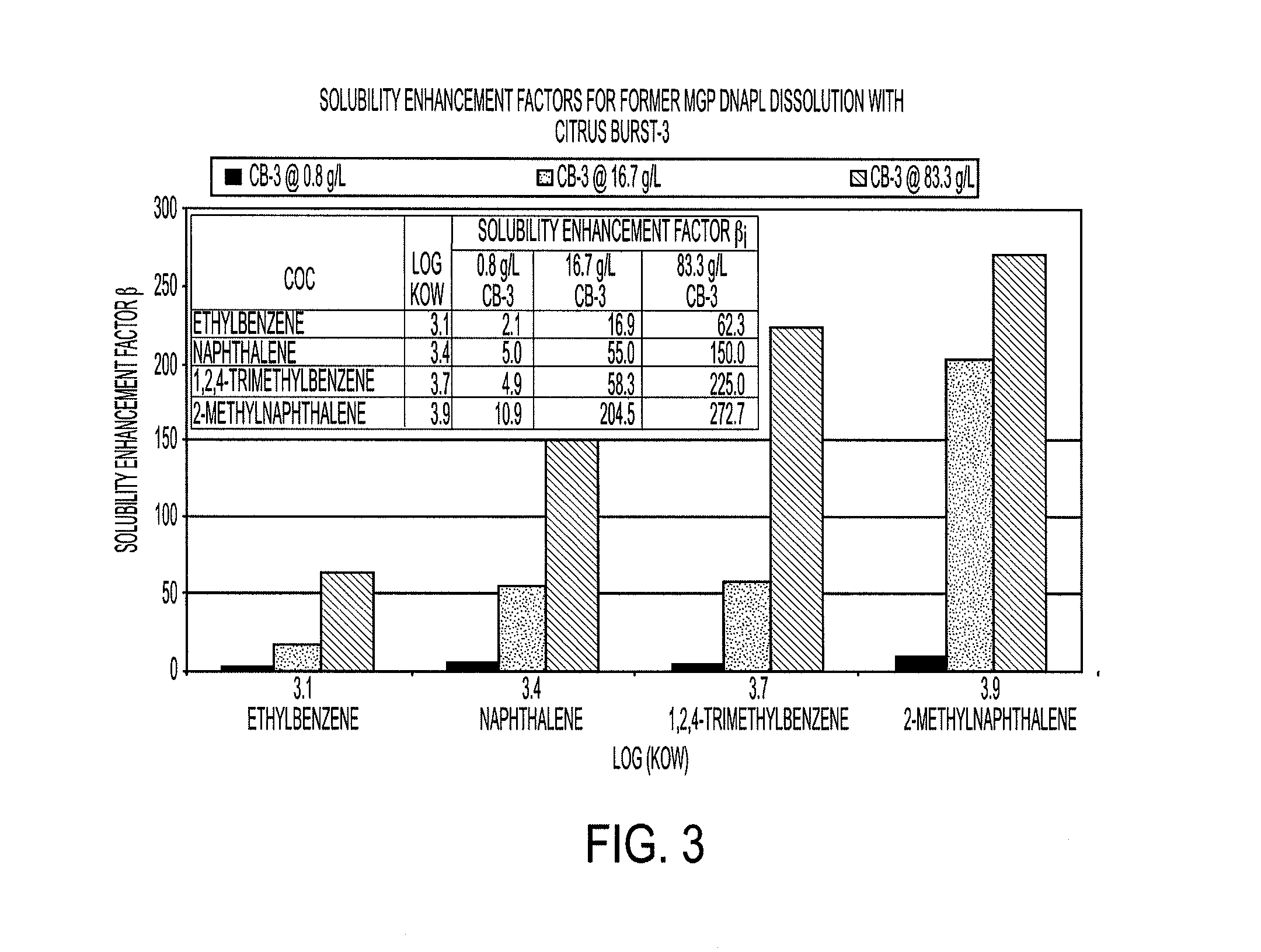Soil remediation method and composition
a soil and groundwater technology, applied in detergent compositions, nuclear engineering, detergent compounding agents, etc., can solve the problems of increasing the solubility of napl components in the aqueous phase, and reducing the amount of contaminan
- Summary
- Abstract
- Description
- Claims
- Application Information
AI Technical Summary
Benefits of technology
Problems solved by technology
Method used
Image
Examples
Embodiment Construction
[0047]Embodiments of the invention are discussed in detail below. In describing embodiments, specific terminology is employed for the sake of clarity. However, the invention is not intended to be limited to the specific terminology so selected. A person skilled in the relevant art will recognize that other equivalent parts can be employed and other methods developed without parting from the spirit and scope of the invention. All references cited herein are incorporated by reference as if each had been individually incorporated.
[0048]Surfactant enhanced in situ chemical oxidation (S-ISCO™) remediation depends on choosing the correct surfactants or surfactant-cosolvent mixtures that create the most effective solubilized micelle or microemulsion with the NAPL present in the soil, such that a Winsor Type I phenomenon occurs and other Winsor type behaviors are generally avoided. Once an adequate Winsor Type I solubilized micelle or microemulsion has formed and thus increases the apparent...
PUM
 Login to View More
Login to View More Abstract
Description
Claims
Application Information
 Login to View More
Login to View More - R&D
- Intellectual Property
- Life Sciences
- Materials
- Tech Scout
- Unparalleled Data Quality
- Higher Quality Content
- 60% Fewer Hallucinations
Browse by: Latest US Patents, China's latest patents, Technical Efficacy Thesaurus, Application Domain, Technology Topic, Popular Technical Reports.
© 2025 PatSnap. All rights reserved.Legal|Privacy policy|Modern Slavery Act Transparency Statement|Sitemap|About US| Contact US: help@patsnap.com



